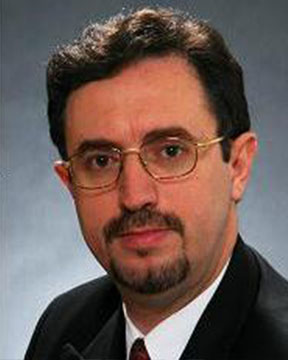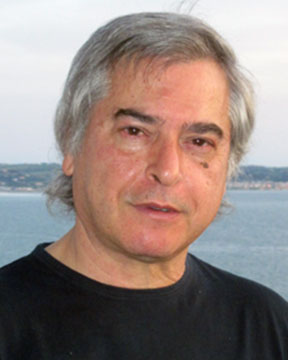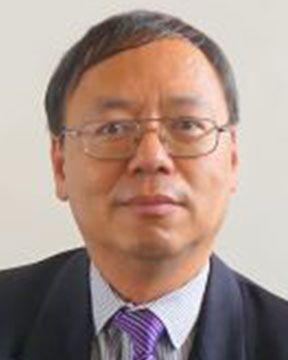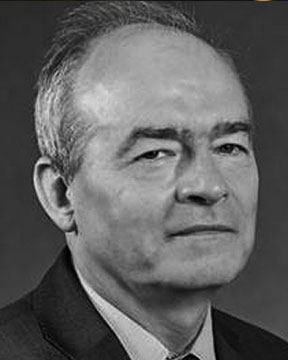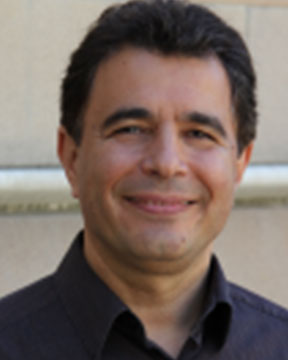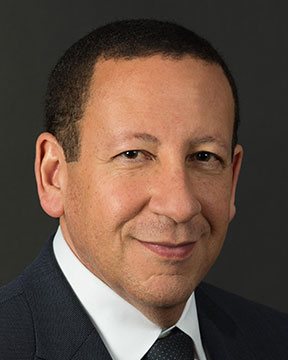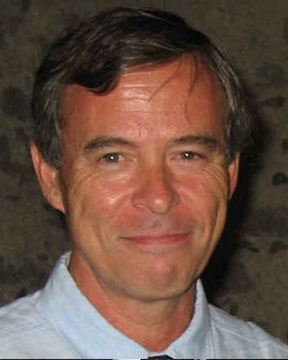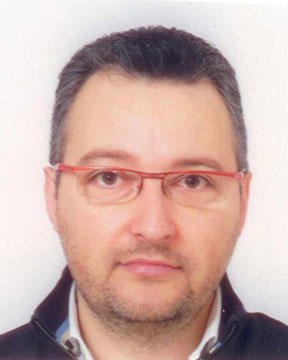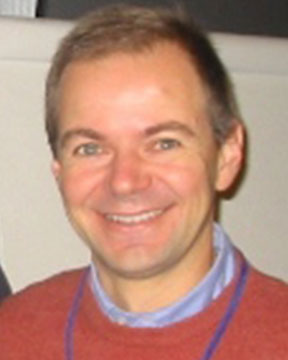



















Intl. Symp. on Geomechanics and Applications for Sustainable Development

Bio | CV | Publications
This major symposium is in honor of the distinguished work and lifetime achievements of Prof. Bernhard Schrefler, a renowned figure in the field of geomechanics and its applications for sustainable development.
Prof. Bernhard Schrefler, 76, was educated at the University of Padua, one of the five oldest universities of the world (800 years old in 2022), and at the University of Wales at Swansea, UK, which, under the leadership of Oleg C. Zienkiewicz, was at that time the centre for the Finite Element Method (FEM), the best-known Discretization Method for Differential Equations. Schrefler was head of the Department of Construction Science and Technology at the University of Padua, is now Professor Emeritus of the same University and Secretary General of the International Centre for Mechanical Sciences (CISM), the best globally known School for doctoral students and post-docs in Mechanical Sciences. He is Member of the National (Italian) Academy of Sciences ("dei XL"), of the Accademia Galileiana di Scienze, Lettere ed Arti, of the Istituto Veneto di Scienze, Lettere ed Arti, and Corresponding member of the Istituto Lombardo di Scienze, Lettere ed Arti, Fellow of the International Association for Computational Mechanics, Honorary Fellow of the University of Swansea and Past Secretary General of the European Mechanical Society EUROMECH. He has been knighted by the French Republic in the Order of Academic Palms.
In addition to this list of honors, Schrefler received many important international awards, which include the Maurice A. Biot Medal from the American Society of Civil Engineers (ASCE), the Euler Medal from the European Community of Computational Methods in Applied Sciences (ECCOMAS), the Olgierd A. Zienkiewicz Medal of the Polish Association of Computational Mechanics (PACM), the Computational Mechanics Award of the International Association for Computational Mechanics (IACM), the IACM Award, the Lifetime Achievement Award of the International Conference on Computational & Experimental Engineering and Sciences (ICCES), the IACM Gauss-Newton Medal, and the INTERPORE Lifetime Honorary Membership Award of the International Society for Porous Media. He has received Honorary Doctorates from the St. Petersburg State Technical University, the University of Technology of Lodz, the Leibniz University of Hannover, the Russian Academy of Sciences, the Ecole Normale Supérieure at Cachan, and an Honorary Professorship from the Dalian University of Technology, Cina.
He has published over 240 papers in peer reviewed journals, and according to SCOPUS, he has received a total of 7,109 citations and his h-index is 48. He is also author of the book "The Finite Element Method in the deformation and consolidation of porous Media", Wiley, 1987, with R.W. Lewis as co-author. Together with the expanded second edition of 1998, they are considered worldwide as state of the art works on these topics and have received. Together they have garnered 2238 citations according to Google Scholar. In 1999 he published with Professor Zienkiewicz, AHC. Chan, M. Pastor and T. Shiomi, the book "Computational Geomechanics with application to earthquake engineering (858 cites). This book is now being translated in Chinese.
Schrefler's research was principally driven by curiosity. His research interests are in the following areas: Environmental Geomechanics, Soil Science and Reservoir Engineering; Bio-Medical Engineering; Structural-and Materials Engineering; and Controlled Thermonuclear Fusion Technology. His research has addressed fundamental aspects of applied mechanics, large scale computation and diverse applications to problems of practical interest. The largest part of his research activity is devoted to mechanics of porous media. His contributions to this field include the application of Biot's theory to the analysis of surface subsidence due to withdrawal of water or water with dissolved gas (Venice, Po Delta); the extension of Biot's theory to two- and three phase flow; its application to subsidence analysis above gas reservoirs by means of an integrated mass balance equation in the reservoir region (subsidence around Ravenna); introduction of the generalized Bishop's stress (also called Lewis-Schrefler split) which is today the most used stress tensor in partially saturated soil mechanics; non isothermal elastic plastic consolidation; infinite elements in isothermal and non-isothermal consolidation; large strain quasi-static and dynamic partially saturated soil behaviour; dynamics of partially saturated soils with fully developed two-phase flow; strain localization in fully and partially saturated soils, determination of internal length scales, gradient dependent plasticity for porous media, cavitation modelling; environmental applications including pollutant transport; constitutive models for partially saturated soils; partitioned solution procedures and their numerical properties, multi-frontal and multi-grid methods and parallel computing for porous media; CBS (Characteristic Based Split) stabilizing algorithm and discontinuous Galerkin method; thermo-hydro-mechanical analysis of partially saturated porous media, including phase change; definition of thermodynamically consistent stress tensors for partially saturated porous media; one fluid (relative humidity) model for concrete at moderately high temperatures, carbonation of concrete; three-fluids model for concrete (chemo-thermo-hydro-mechanical analysis taking into account of dry air, capillary and adsorbed water and water vapour in the pores), with application to concrete under very high temperatures (thermal spalling, tunnel fires and reactor vessels), concrete at early ages and beyond, leaching, and Alkali-Aggregate Reactions. The three fluids model for concrete has been recently incorporated into the codes CAST3M of CEA (the French Atomic Energy Commission), CESAR of LCPC (Laboratoire Central des Ponts et Chausées, France), SYMPHONIE of the Centre Scientifique et Technique du Bâtiment (CSTB, France) LUSAS (UK), and HITECOSP of the Italian Agency for New Technologies, Energy and for Sustainable Economic Development (ENEA), with a patent. More recently Schrefler realized that crack tip advancement in hydraulic fracturing is not smooth but stepwise with pressure oscillations. This fact was unknown in the mechanics community where analytics and numerics featured smooth behaviour. Subsequently he was able to explain this behaviour by invoking self-organization of rupture.
In the field of Bio-Mmedical Engineering he has applied porous media mechanics to the analysis of soft tissues such as periodontal ligaments, spinal disc, trabecular meshwork in the eyes, and Artificial Neural Networks (ANNs) for adhesion modelling of Nano Particles in diseased microvasculature. In 2011 he started a new topic, the development of tumor growth and drug delivery models, to evaluate computationally the efficacy of anti-cancer drugs, including those carried by nanoparticles. This research is based on diffusion and flow of tumor cells, healthy cells and interstitial fluid in a deforming porous extracellular matrix (ECM), and diffusion-advection equations for transported substances by the neo-vasculature and the interstitial fluid in the tumor microenvironment. This is probably the most general model available today, able to simulate not only growth, hypoxia, necrosis and lysis of the tumor cells but also invasion into the healthy tissue, transport of therapeutic agents and signaling molecules, mass exchange between the interstitial fluid and the cell populations, and angiogenesis. Further it includes deposition and remodeling of the extracellular matrix; the possibility of migration of the tumor cells through an existing ECM as is needed in case of ex-vivo experiments on decellularized ECM; the possibility of accounting for different interfacial tensions between the tumor cell, healthy cells, ECM, and interstitial fluid; mass exchange between the newly created and co-opted blood vessels and the interstitial fluid. Conventional models where cells are lumped with the ECM, also permeated by an IF, exclude several of the above features.
His contributions to Structural and Materials Mechanics include the original development of the pseudo three-dimensional analysis of tall buildings, on which the code HOCHHAUS-KERN of RIB Software (Stuttgart) is based; numerical solutions of variable thickness plates; geometrically non-linear analysis of cable structures and related stability problems, interaction between snap-through and bifurcation problems with use of the catastrophe theory (cusp catastrophes in series); membranes and wrinkling; numerical solution of asymptotic theory of homogenization including second order and boundary layer correctors; development of multi scale methods, both hierarchical and concurrent; numerical construction of yield surfaces at macroscopic level taking into account micro structural information; thermo-mechanical analysis of structures including contact (constitutive laws at contact surfaces including information from microscopic level); residual stresses in welding; use of ANNs as constitutive models (black box) in Finite Element programs and for parameter identification for symbolic constitutive models (deep learning).
In the field of Technology for Thermonuclear Controlled Fusion, Schrefler became involved in the design of a device for studying Thermonuclear Controlled Fusion called Reversed Field Pinch (RFX), still operating at the University of Padua. He designed coils and vacuum chambers, including the carbon tiles. Subsequently he was involved in the design of NET (Next European Torus), which was never built because it was superseded by the ITER (International Thermonuclear Experimental Reactor), which is currently under construction in Cadarache, France and already half completed. In this instance he dealt with superconducting coils through a multiscale and multiphase model, which allowed very accurate predictions of the residual strains after cool-down in the construction stage.
This introduction is only a brief overview of the extremely large breadth of Schreflers's innovative research, and only those with the largest impact in the scientific communities are presented.
Reflecting on his outstanding academic activity, this international symposium will feature plenary, keynote and invited lectures on geomechanics, including but not limited to topics on: computational geomechanics; best practices in hydraulic fracturing for unconventional hydrocarbon production; nuclear waste disposal; durability of concrete and other porous building materials; conservation of the architectural heritage, degradation of natural building stones; stability of man-made structures; natural hazards; depollution; urban reclamation; waste management; and surface waste disposal.
ROUND TABLE DISCUSSIONS
A round table discussion open to everyone interested will be organized at a specific date and time during the symposium. It will be a platform for high level representatives of various industries, technologies, and academic disciplines to freely discuss and debate all topics of this symposium, and identify positive and efficient pathways towards sustainability in industrial practices, technologies, and research.
You are cordially invited to actively participate in this symposium by submitting and presenting a paper, or by attending the round table. We look forward to meeting you at the Cyprus, October 2019.


